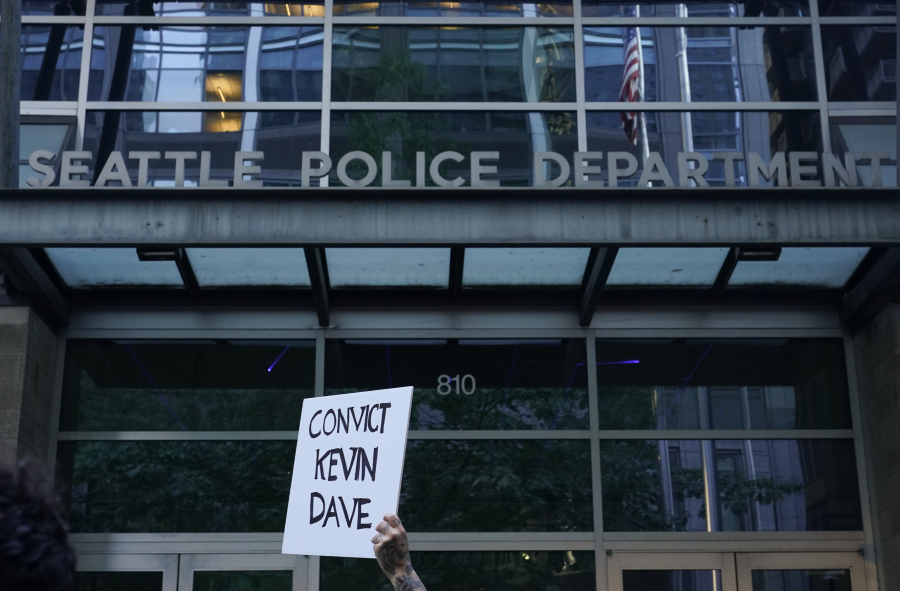Washington’s Supreme Court in a 5-4 decision on Thursday invalidated some of the restrictions the state Legislature put on law enforcement’s use of tear gas to suppress riots.
The ruling overturns part of a state law passed in 2021 that requires police to get approval from the highest elected official in the jurisdiction where tear gas might be used before deploying it. That official is the mayor in cities and the governor in the case of the Washington State Patrol.
The ruling holds that the section of the law is unconstitutional when applied to sheriffs in so-called “noncharter” counties. This is the case for 32 of the state’s 39 counties. In these counties, the highest elected official is the chair of the county commission.
The court took up the case after sheriffs and commissioners from seven counties sued the state over the provision, saying it interfered with sheriffs’ duties and violated the state constitution’s separation of powers between different parts of government. A trial court sided with the sheriffs and the state appealed to the Supreme Court, which upheld the lower court ruling.
“We conclude quelling riots is a core function of the sheriff’s office,” wrote Justice Charles Johnson for the majority. “We emphasize discretionary use of lawful force in riot suppression is a core function of the sheriff’s office.”
“Permitting the legislature to redefine a county office’s core functions would dilute the office’s position,” Johnson added.
Steve Strachan, executive director of Washington Association of Sheriffs and Police Chiefs, said he’s “pleased” the suit makes “crystal clear this authority belongs to the elected Office of Sheriff.”
Seattle Sen. Jamie Pedersen, who chaired the Senate Law and Justice Committee when the law passed, said the decision will likely not impact how tear gas is used in practice because more populous counties, like King and Pierce counties, are chartered.
“If you think about where a riot is likely to occur, it’s not super likely to occur in Pend Orielle County or Ferry County,” Pedersen said. “It’s most likely going to occur in Seattle or one of the urban areas around Seattle.”
Requiring approval from a public official was a compromise between House and Senate lawmakers as they hammered out police reform legislation shortly after the killing of George Floyd and subsequent 2020 Black Lives Matter protests. Pedersen wanted to entirely ban the police use of tear gas on the public. A House version of the bill allowed for tear gas use with restrictions.
Pedersen called the compromise a “hastily crafted amendment.” He said the court’s decision actually aligns with the intent of the bill, because legislators wanted an elected official to be accountable to voters for any use of tear gas, and sheriffs in noncharter counties are elected.
The court decision will not affect other sections of the law, which require officers to exhaust all alternatives to tear gas, announce that tear gas will be used and allow sufficient time and space for people to disperse before it is deployed.
In the dissenting opinion, Justice Sheryl Gordon McCloud argued that while quelling riots is a core function of the sheriff’s office, using tear gas is not fundamental to quelling a riot.
“There is simply no evidence in the historical or statutory record to show that sheriffs ever had unilateral power to decide everything about how to quell a riot,” Gordon McCloud wrote.
The Washington State Standard is a nonprofit, nonpartisan news outlet that provides original reporting, analysis and commentary on Washington state government and politics. We seek to keep you informed about Washington’s most pressing issues, the decisions elected leaders are making, how they are spending tax dollars and who is influencing public policy.



